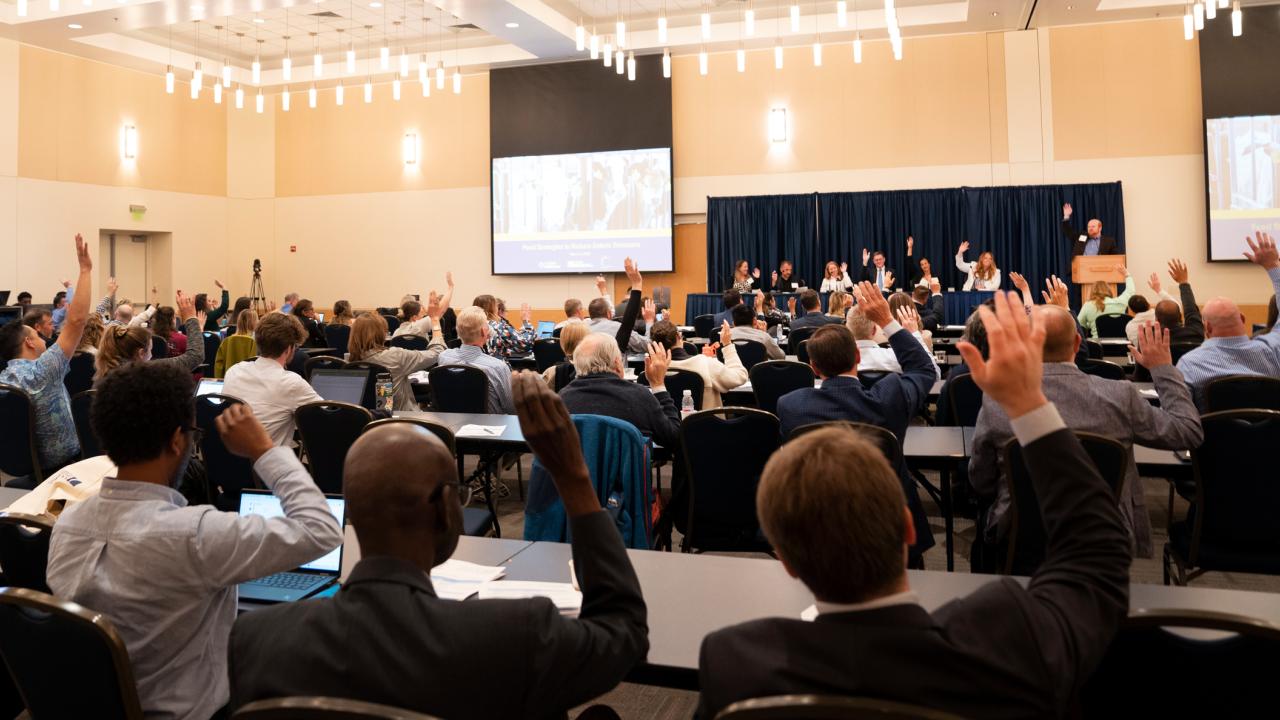
We’ve Only Just Begun: UC Davis and CDFA Feed Summit Convene Diverse Group of Experts to Discuss Enteric Methane
CLEAR Center helps bring NGOs, Regulators, Policy Makers, Industry and Academia Together to Talk Climate Solutions
By Frank Mitloehner
Q: What do you get when you bring together representatives from the federal government, California’s regulatory agencies, scientists from top research universities, the United Nations, the Environmental Defense Fund, industry representatives, and countless more organizations and individuals concerned with making animal agriculture more sustainable worldwide?
A: The first-of-its kind meeting to discuss workable climate solutions for ruminant livestock.
I’m still exuberant over our inaugural State of the Science Summit hosted by the UC Davis College of Agricultural and Environmental Sciences, CLEAR Center and California Department of Food and Agriculture at UC Davis May 2 and 3. Rarely have we seen so many diverse stakeholders in one room and attending virtually, discussing ways to make livestock a more climate-friendly food option and take a bite out of global warming by reducing enteric emissions of methane.
It was a who’s who in this area, and it just so happened to take place in the region that’s leading the United States – if not the world – in production and sustainability. Where the latter is concerned, California has the most ambitious climate goals in America. But others are likely to follow suit, and if we can share what we’re doing, it’s all to the good.
Perhaps the most widely known and boldest of California’s climate goals is a 40% reduction in the state’s methane emissions by 2030. Animal agriculture is responsible for more than half of the state’s methane emissions, so it’s a lot on the shoulders of our dairy farmers and cattle ranchers. That said, we’re making genuine progress with alternative forms of manure management, for example. But we’re not likely to hit the target of 40% without chipping away at enteric emissions, the No. 1 source of methane in animal agriculture. Feed additives are going to be key.
So, we spent two days talking about how to make cows less gassy, to put it plainly, through feed additives. However, we didn’t come up with a silver bullet. Lest anyone think all we need to do is put some seaweed or tannins in cows’ feed, think again. It’s much more complicated than that. However, I believe the summit laid down a cornerstone of trust, collaboration and determination that will serve us well. As long as we stay the course.
When Dr. Joe McFadden, a highly respected animal scientist from Cornell University, said we academics need to put our egos aside for the good of all, I wanted to give him a standing ovation. When Dr. Aimable Uwizeye from the UN’s FAO stated it’s far better to reduce methane emissions than reduce animal agriculture, I could almost see a light bulb go off. When Dr. Peri Rosenstein, one of several Environmental Defense Fund team members who came out to support the summit, shared her belief that reducing methane is the best way to curb global warming, I witnessed many nods of agreement. And when Chuck Ahlem, a long-standing, well-respected producer talked about his history with the industry and how it was once unheard of to have anything other than an adversarial relationship with our regulators, I was ever more convinced we are taking the right approach to sustainability in animal agriculture.
To be fair, any change in the way we feed our animals has to follow a long path to eventual consumer acceptance, the crux of it all. We must first find substances that succeed in lowering methane emissions from animals’ digestion, and we’re working on that daily. We have to determine that they’re safe for the animals and that they’re not harmful to humans. Consequences on animal health are unacceptable – period. In my lab, that is always a consideration.
But even if they are safe to use, do they cause side effects we need to be aware of? Once we determine that we’re on to something, can we source enough of the additive(s) to widely distribute them via the supply chain?
However, I’m getting ahead of myself. The feed industry is highly regulated – and with good reason. The road to state and federal approval can be lengthy and fraught with obstacles. In the meantime, manufacturers must retool and be ready to produce new or modified feeds. Farmers have to be convinced the new feeds will be beneficial to them and their herds – in every way.
As Dr. Kim Stackhouse-Lawson, director of AgNext and a professor of animal science at Colorado State University, rightly pointed out, farmers want to be part of the solution. “Producers are looking for answers to the problem of enteric emissions,” she said, but we have to give them viable options and make it economically feasible for them to change their methods of production. Incidentally, California is doing that currently with incentives tied to manure digesters, and it’s been a successful undertaking.
Last but certainly not least, consumers must trust that the food of their food is safe for them and good for the planet.
I have been convinced for a long time that the only way to effect lasting change is by working together and more to the point, working with the industry. I am often criticized for doing that, but I won’t stop. Not when we have so much to do.
Perhaps Christine Birdsong, undersecretary of California’s Department of Food and Agriculture, said it best upon helping to close what she called a “historic summit.”
“We need to bring more people into this conversation.”
